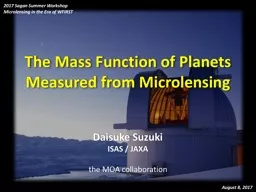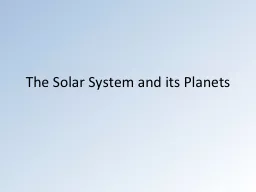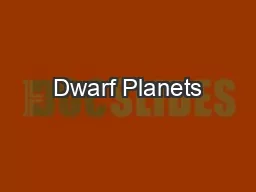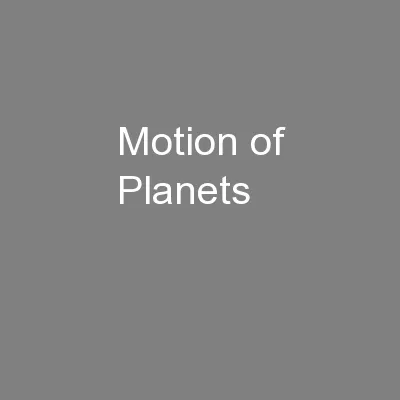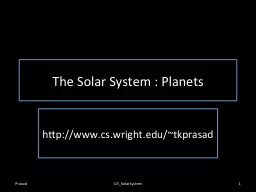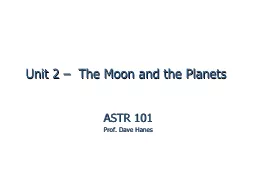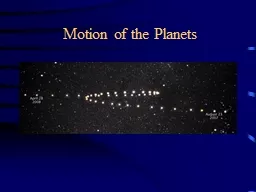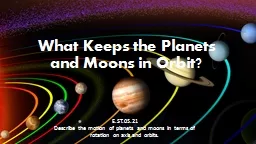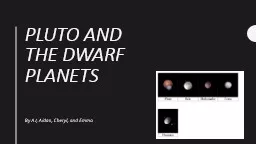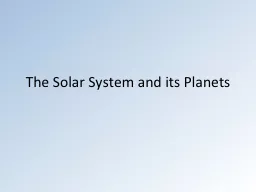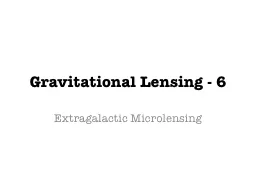PPT-T he Mass Function of Planets Measured from Microlensing
Author : lois-ondreau | Published Date : 2018-02-25
Daisuke Suzuki ISAS JAXA the MOA collaboration August 8 2017 2017 Sagan Summer Workshop Microlensing in the Era of WFIRST a snow 27 M M Sun AU http exoplaneteu
Presentation Embed Code
Download Presentation
Download Presentation The PPT/PDF document "T he Mass Function of Planets Measured f..." is the property of its rightful owner. Permission is granted to download and print the materials on this website for personal, non-commercial use only, and to display it on your personal computer provided you do not modify the materials and that you retain all copyright notices contained in the materials. By downloading content from our website, you accept the terms of this agreement.
T he Mass Function of Planets Measured from Microlensing: Transcript
Download Rules Of Document
"T he Mass Function of Planets Measured from Microlensing"The content belongs to its owner. You may download and print it for personal use, without modification, and keep all copyright notices. By downloading, you agree to these terms.
Related Documents

